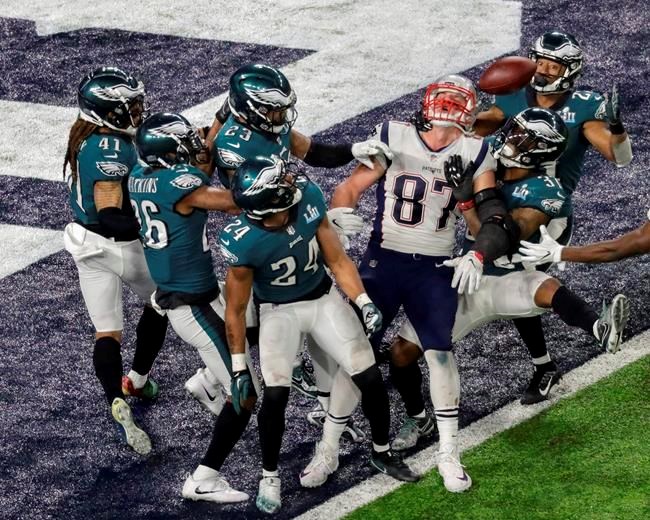Cris Collinsworth was ahead of the game on analytics, buying Pro Football Focus in 2014.
The Emmy Award-winning football analyst says it wasn't until 2018, however, that he really started believing in the numbers. That's when the Philadelphia Eagles routinely bucked conventional thinking and went for it on fourth down en route to winning a Super Bowl title.
"That was the Eagles' MO the whole year, they went for it when other teams didn't," Collinsworth said in a recent interview. "They understood what the odds were of not only making that four-and-four but also what happens if they kicked the ball back to Tom Brady.
"I still kind of laugh at it today because now the football purist just goes, 'Of course you go for it there on fourth-and-one.' I'm like, 'Get out of here. All of you people, none of you were doing that. Don't even act like you were.' It's fun for me to see the entire evolution."
Earlier this month, the CFL announced its partnership with Pro Football Focus. The agreement helps boost the use of analytics for the nine Canadian franchises, who all used PFF last season.
It also provides player analysis tools for media and fans.
PFF, located in Cincinnati, provides data for all 32 NFL teams as well as 102 American college football squads. Its grading system evaluates all players on every play during a game and translates data points into a grade for each player, then compares them to their peers across the league.
The CFL has started sharing PFF's insights with its new-look weekly top performers. Instead of highlighting three players, this year's format features the highest-graded players at their respective positions.
"Partnering with Pro Football Focus allows our league to better understand its drivers of play," said Greg Dick, the CFL’s chief football operations officer and head of Grey Cup and events. "We're removing the microfocus on the individual and taking a long view to look at the bigger picture."
The two sides have been working on their partnership for some time.
"It's probably four, five years coming," said Ryan Smith, PFF's director, agency services. "We started working with some of the individual CFL teams, did some visits and they were using it primarily for NFL scouting once the preseason cuts were made, kind of scouting some players and hopefully adding them to their rosters.
"Now that has changed with us breaking down the CFL and being able to help their weekly game planning so it's beyond just scouting."
The CFL is currently dealing with game-statistic glitches and player profiles that have disappeared from its website, issues commissioner Randy Ambrosie has asked for patience from both media and fans. However, the deal with PFF is an indication the CFL is trying to improve or add to its numbers.
Smith said the grading of CFL players is similar to what PFF does with both the NFL and NCAA. But some nuances of Canadian football -- the longer, wider field, 24 players on the field, three downs and open-field kicks-- presented some initial issues.
"There've been some technical challenges we've had to navigate but I think we're in a good spot heading into the year with the season now underway," he said.
Collinsworth said players are very well aware of their PFF grading. The 64-year-old knows all too well how a player's mind works, having spent eight seasons as a receiver with the NFL's Cincinnati Bengals (1981-88).
"We're not telling you how historically great a player is, we're telling you where he is in relation to the other players at the position in the league," Collinsworth said. "I've had those big, huge players walking over to me when I go out to watch practice and in a panic I'm trying to remember what their PFF grade was to remember if I need to run or if he's going to hug me.
"It's a powerful thing. Believe me, I understand personal. They pass out Emmy Awards every year, too. I get it, I understand it."
PFF's data and grading system provide pro football personnel with additional information and streamline the evaluation process.
"We had an NFL team tell us not too long ago it saved 10,000 man hours in its scouting process for the draft using PFF," Smith said.
That's a positive for CFL personnel departments, which are significantly smaller than those in the NFL and also operate on less money.
And what PFF does helps Collinsworth immensely as an analyst.
"I honestly don't know how I'd do my job without it," he said. "By Monday afternoon, I'm in a meeting previewing the 20 pages of notes and film our guys have studied the week before (on two teams slated to play Sunday night).
"Tuesday is all of the film on one team, then Wednesday I do the other team. Thursday I get into the packet on exactly what all of that means and I watch more film to back up whatever it is they've been saying. On Friday I go talk to one team, Saturday is the other and then we call the game. "
PFF also helps while Collinsworth is on the air.
"At halftime, our analysts send me a report of what they've seen based on the grades," Collinsworth said. "So if I've missed something or they enhance something I've been talking about, now I get to that in the second half.
"So it's a wall-to-wall, seven-day-a-week job. Some of our guys, it's probably an eight-day-a-week job but that's what every week looks like."
This report by The Canadian Press was first published June 23, 2023.
Dan Ralph, The Canadian Press



